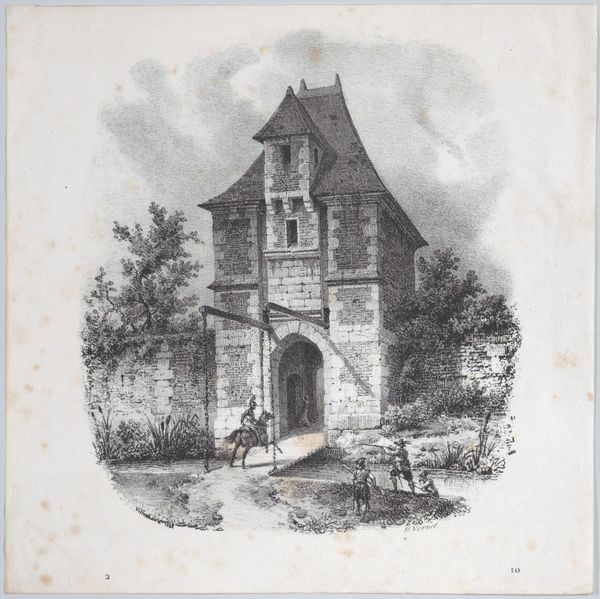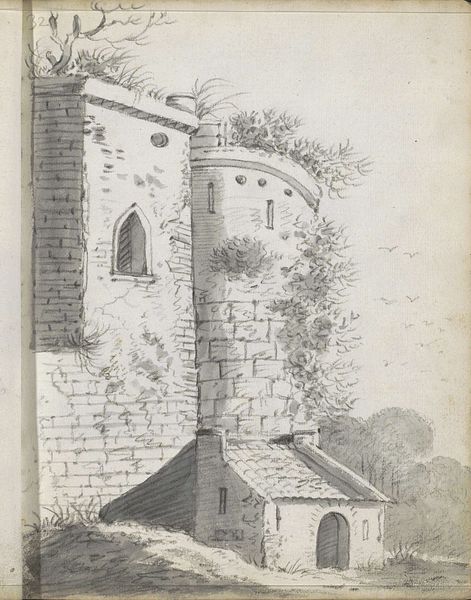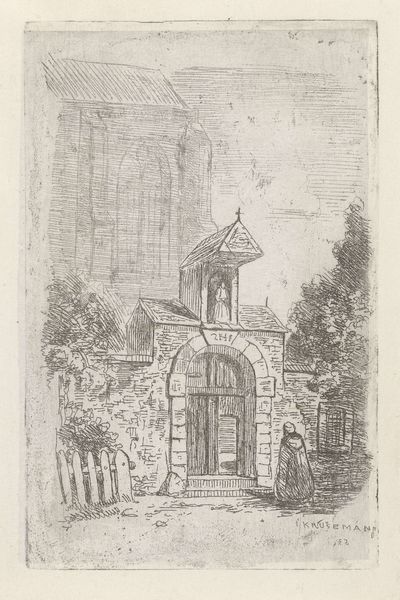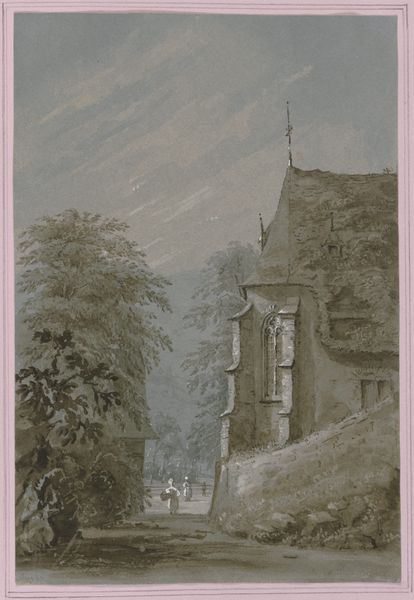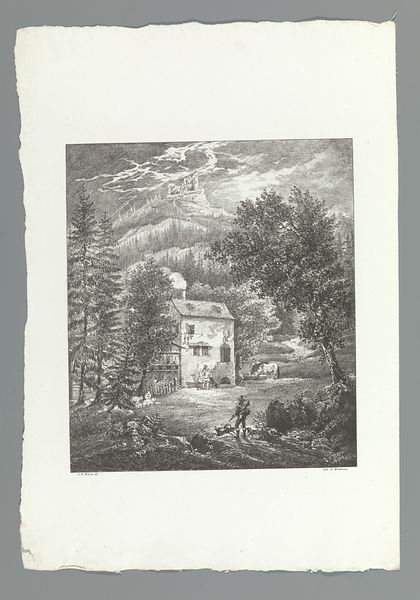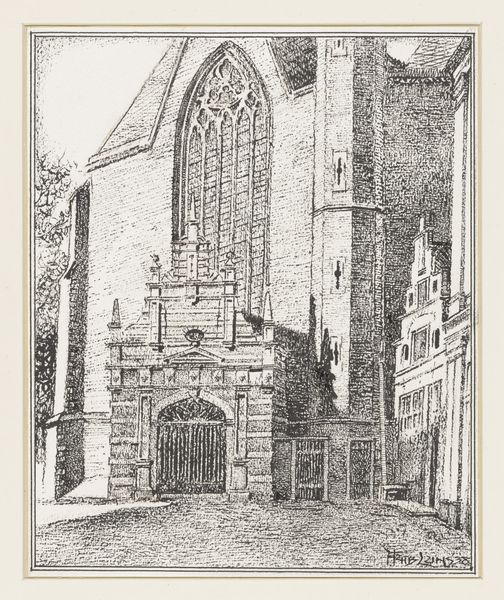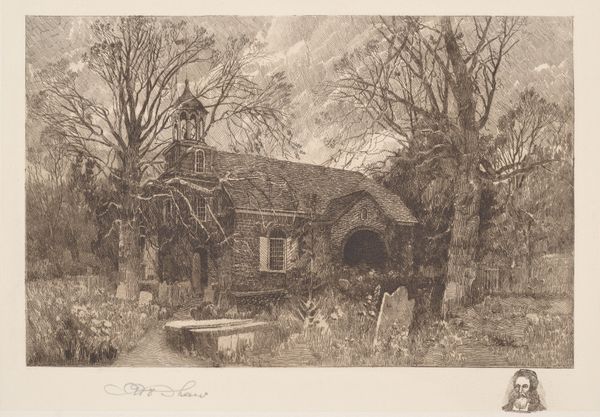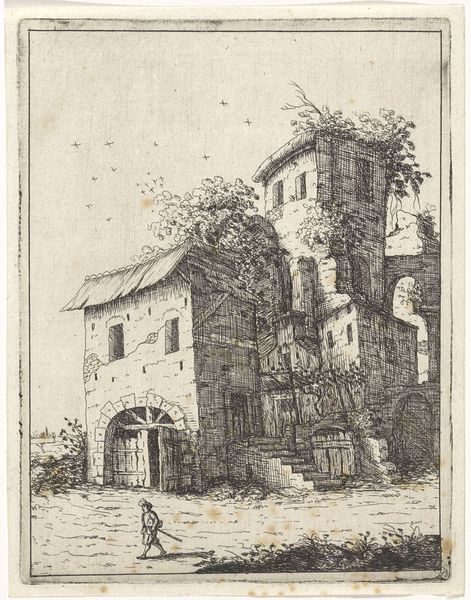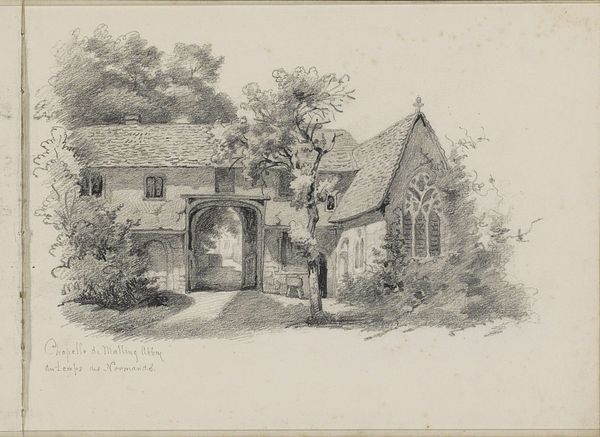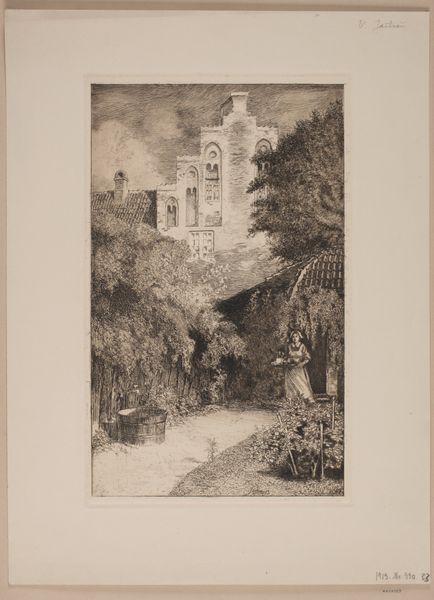
drawing, etching, engraving, architecture
#
drawing
#
medieval
#
etching
#
landscape
#
etching
#
engraving
#
architecture
Dimensions: Plate: 11 3/4 × 8 3/4 in. (29.8 × 22.2 cm) Sheet: 13 1/2 × 9 5/8 in. (34.3 × 24.5 cm)
Copyright: Public Domain
Curator: Looking at this etching, "Near Durham" by John Sell Cotman, created around 1838, what strikes you first? Editor: There’s a real sense of somber grandeur, a looming weight to the architecture depicted here. It feels incredibly steeped in history. Curator: It's fascinating how Cotman uses line and shadow, isn’t it? Cotman aimed to offer picturesque views that fed the 19th century’s fascination with the medieval past. His choices played a crucial role in how places like Durham were perceived and promoted as heritage sites. Editor: The building itself dominates the composition. The arched windows and the textured stone—they’re not just architectural details; they symbolize resilience, perhaps even spiritual endurance over time. The architectural elements are clearly meant to inspire feelings. Curator: Indeed. And the figures at the bottom seem almost secondary, perhaps included to give a sense of scale and reinforce the grandness of the architecture. Editor: The use of light definitely directs the viewer’s gaze. It draws your eye up to the architecture, almost encouraging you to imagine all the stories that building has witnessed. Curator: And yet, these architectural prints also played a part in constructing the idea of "Englishness." Cotman's meticulous focus on these landmarks helped to canonize particular historical narratives that persist even today. Editor: You're right, beyond the romantic aesthetic, it taps into this deeper sense of rootedness. An etching can't help but capture permanence on some level. Curator: Thinking about its original audience, what did viewing buildings through art like this accomplish for their social and historical consciousness? Editor: Well, it offered a tactile connection to the past, a way to claim some emotional ownership of their heritage. It’s not just seeing the architecture; it's about internalizing its emotional weight. It offers visual testimony. Curator: It truly speaks to the lasting power that symbols, like medieval architecture, hold within a culture. Thanks for sharing your insightful interpretation of this remarkable etching, it's enriched my understanding. Editor: The pleasure was all mine; the weight of this etching clearly speaks of England's rich and varied past.
Comments
No comments
Be the first to comment and join the conversation on the ultimate creative platform.
